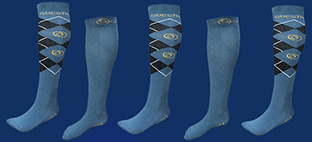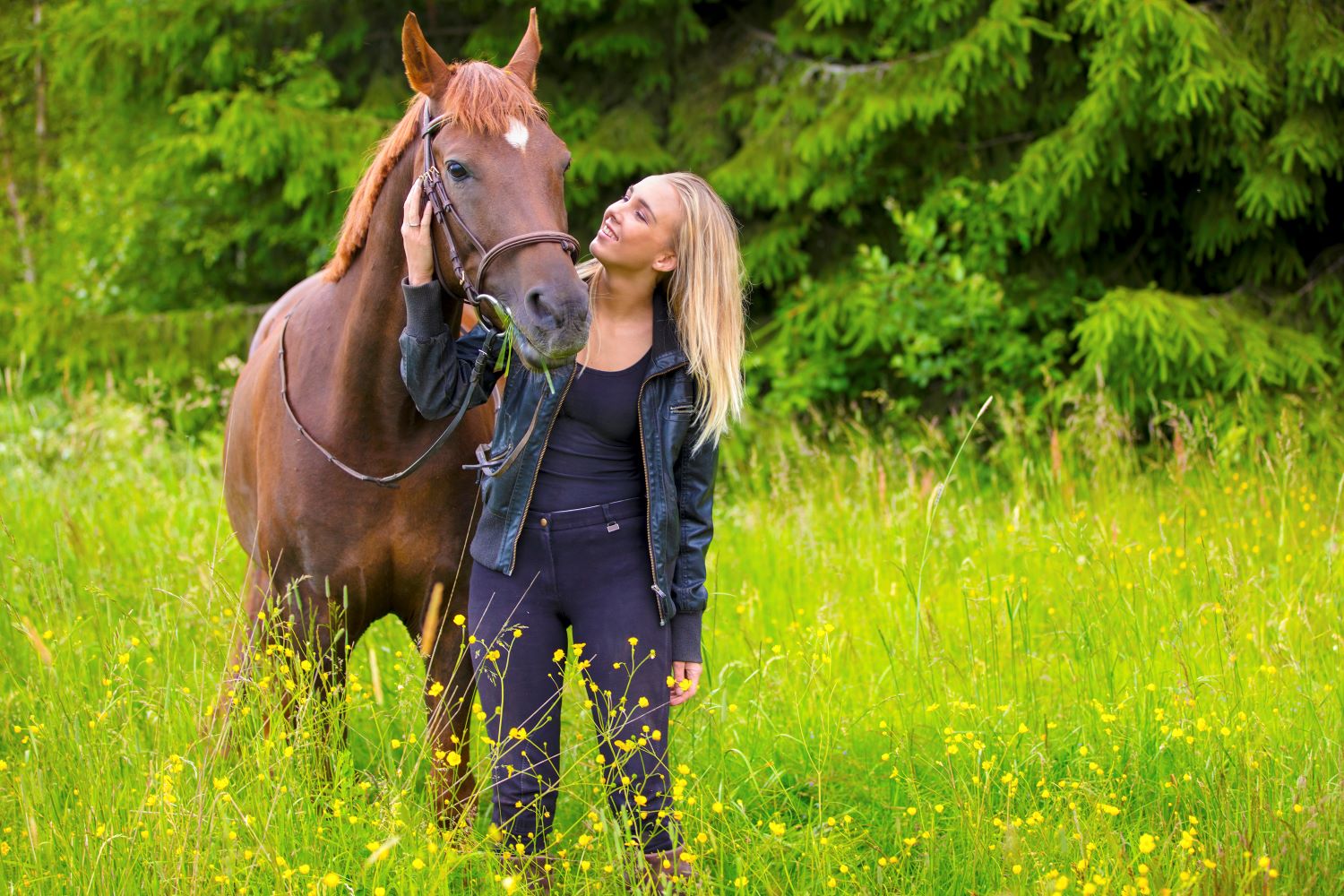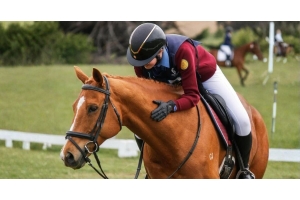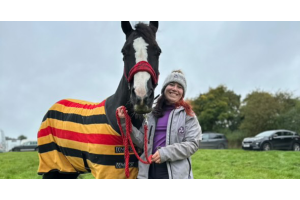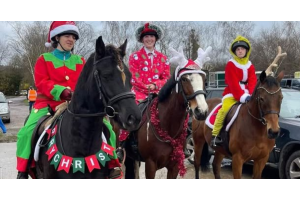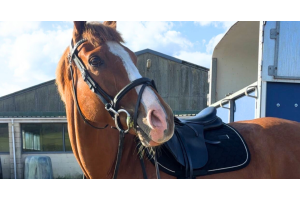13 Types Of Horse Sports & Competitions
Table of Contents:
Eventing
Showjumping
Dressage
Showing
Polo
Racing
Vaulting
Reining
Cutting
Gymkhana
Barrel Racing
Team Chasing
Endurance
Whether you’re a seasoned equestrian or just getting started, there are heaps of unique horse sports and competitions to get involved in that are enjoyed all over the world.
Here is a list of 13 popular types of horse sports and competitions:
Eventing
Eventing is the triathlon of the horse world, including three disciplines which is the dressage, show jumping, and cross county.
The horse should be calm and attentive enough to accomplish a dressage assessment, athletic and active enough to finish a round of show jumping, and strong, swift, and confident enough to take on a cross country track with between 20 and 30 obstacles spread out across different terrains.
There are two types of competitions:
Short
In the shortened format, all three activities can be completed in a single day.
Long
The three tests are identical in long format, but they are conducted in a different sequence and also with the inclusion of roads and circuits, as well as a steeplechase.
Riders complete the dressage test on the first day. The second day is divided into three sections: a stable trot on roads and tracks, followed by a steeplechase at a rapid gallop.
Lastly, the final part is a timed cross-country course if the horse has passed the vet check following the steeplechase. With the show jumping round on day three, the overall rankings are decided.
This is most likely the horse's ultimate challenge of strength, endurance, and conditioning.
Showjumping

The horse and rider must accomplish a sequence of obstacles, which may include uprights, spreads, or combinations of leaps in doubles or trebles, in show jumping.
This horseback riding activity is intended to put the horse's mobility, sight, and attentiveness to the test. It also evaluates the riders to determine the proper pace and route.
When a pole/barrier is knocked down, the player receives a fault.
The duo that completes the course in the quickest time while making the fewest faults wins.
Courses are divided into two sections at the lower levels. The first section has an optimal time, and riders that knockdown barriers or go beyond the ideal time are penalized. The second stage is jumping as quickly as possible without knocking any jumps. Riders at the higher levels must leap cleanly in order to advance to the following round, which is a timed jump-off.
Dressage

The goal of dressage is to assist the horse’s athletic growth, which can take a lot of time and patience to get the horse's stamina, stability, and competence to the level desired at the top. At its most basic level, the objective is to achieve a sense of timing and calmness.
In competition, effective training is proved by completing tests of specified motions, each of which is given a score out of ten. The evaluators are aiming for horses who are relaxed, responsive, and graceful as they execute the maneuvers.
Dressage requires not only the grace and beauty of the horse but the clean and tidy appearance of the rider. Special breeches and other premium riding equipment is usually purchased specifically for dressage competitions.
While conducting difficult movements like piaffe or flying changes, the elite dressage riders make it appear as if they are not even rocking in the saddle.
Showing
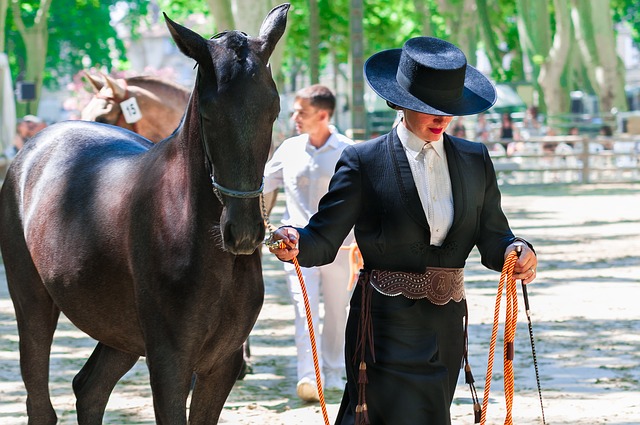
Showing is a discipline that involves a wide range of courses for horses of all ages, breeds, and sorts. They may either be ridden or handled.
Young riders will be presented in hand, with a focus on the horse's shape, speed, and demeanor.
Ridden courses take much longer to evaluate since the horse must be shown under saddle with the group, create an individual display, be ridden by the judge, and then be assessed without tack. To determine the winner, marks are given for each of these parts.
Horse Polo
Polo, sometimes known as "the sport of kings," is one of the earliest known team sports, having originated in India as a training match for cavalry forces. In a 1.5–2 hour game separated into 7-minute sections called chukkas, two teams of four riders attempt to score as many goals as possible.
Between chukkas, there is a four-minute break and a ten-minute halftime. Participants at the highest level may switch horses every few chukkas due to the tremendous pace of the game.
Umpires keep an eye on the game to ensure that both the participants and the horses are secure. In most cases, the player who strikes the ball has the right of way, and other players are not allowed to cross the ball line in front of every player.
Participants can use their mallet to stop an opponent's stroke or to pull an opponent away from the target with a bump or ride off.
Horse Racing
The races are held either "on the flat" or over the hurdles. Flat racing is a challenge of agility, endurance, and the jockey's competence to select the best strategies for their horse, the racetrack, and the race as it unfolds. The races range in length from 5 furlongs to two miles.
The majority of flat races take place on grass, but synthetic or all-weather courses are becoming increasingly popular. Horses can compete in a wide range of aspects, including classics, group and classified races, maidens, and handicaps, depending on their gender, age, and aptitude.
Equestrian Vaulting
Gymnastics on horseback has been defined as vaulting. In Roman times, it was a common activity that evolved into carnival bareback riding, trick riding, and thus more recent, a fiercely competitive sport.
Individuals and groups of up to three riders perform moves on a horse while lunging on a 15-meter circle in canter. The required routine and the flexibility routine are the two rounds.
The actions are planned to show the horse's majesty, brightness, force, endurance, and grace in synchrony. All vaulting qualifications are graded based on skills, style, hardness, stability, safety, and compassion of the horse, with a total rating of ten. The manner in which the horse moves accounts for 20% of the final score.
Reining

Reining is a Western riding discipline that demands the horses and riders to work together to accomplish a certain sequence of maneuvers, such as galloping small and big circles, flying lead changes, fast spins, and sliding stops. It takes about 2.5 to 3 minutes to finish each pattern.
A panel of judges evaluates every performance on cleanliness, delicacy, confidence, and rapidity using a scoring system. The goal is to have a horse that is willing to be led with little or no opposition.
Cutting
Cutting is a ranch sport. It requires the horses and riders to show off their ability to separate particular cows from the herd.
The rider directs the horse to detach which cow from the herd, and then lets go of the reins. The horse takes command of the cow chosen by the rider and must be intelligent and athletic enough to maintain the cow in the pen's centre, distant from the herd.
Gymkhana
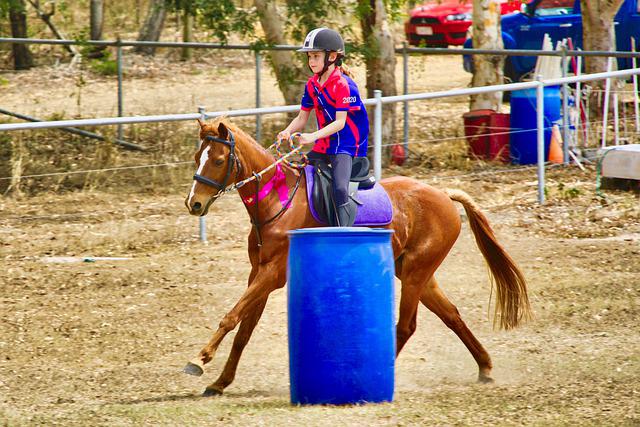
Some of us have participated in gymkhana activities as kids as a fun method to improve our stability and riding abilities on a horse. As you go through the stages, it may get quite intense.
Individuals and teams participate in a variety of multi-game tournaments meant to put their precision control and close collaboration to the test. Flying changes, sliding stops, and pole bending are all essential skills.
Barrel Racing
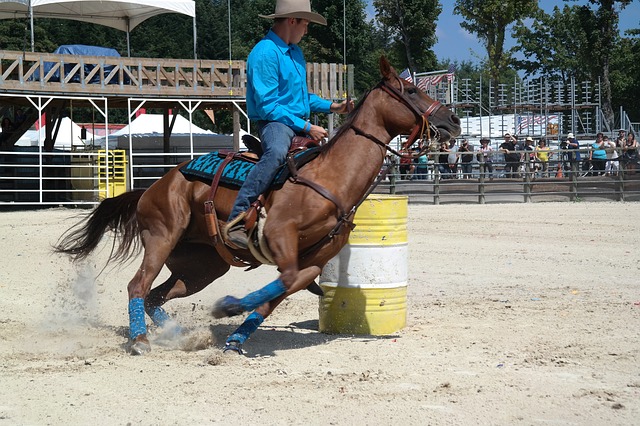
Barrel racing is a rodeo activity in which the horse and rider must pass three barrels in a cloverleaf pattern in the shortest amount of time possible. One barrel is immediately ahead, one to the left, and one to the right in such a triangular shape.
From a standing position, the horse and rider must execute the route around the barrels as quickly as possible from left to right and back. Although there are penalties for striking or falling over a barrel, the quickest runner wins.
Team Chasing
Team chasing is a game in which four riders compete against each other across a two-mile cross country course with roughly 25 obstacles to leap.
In principle, it's similar to an old-fashioned hunter path, although it takes place across open countryside with natural impediments such as hedges. The team that completes the course in the shortest amount of time wins. As they reach the finish line, the team's third rider stops the clock.
Endurance
Long-distance riding may be divided into two categories: endurance and competitive trail riding. Endurance rides, which are similar to marathons in running, can span up to 160 kilometres in a single day. The very first horse to reach the end of the line is the winner.
It necessitates the rider's discretion in determining the proper pace for the terrain and the horse's most economical tempo over a long distance. All through the race, veterinarians examine to see if the horse is active and healthy enough to proceed.
Any breed can compete, but owing to its strong natural stamina and tenacity, the Arab typically sweeps the upper levels.
The Takeaways
These are some of the most well-known horse sports and competitions from around the globe. These are a fantastic way to show off the skill, intelligence, and athleticism of both horse and rider.
At the end of the day, it doesn't matter what game you're playing or what competition you're in. The bond between horse and rider is always at the forefront, be it in a simple game of Polo or an intense endurance race. What matters is that both horse and rider are having fun and enjoying themselves!
Want to find out more about any of the above horsey sports?
Drop us a message at contact@questrasports.com and our friendly team here at Questra will be more than happy to chat through all things equestrian & help you choose your perfect riding fit!

